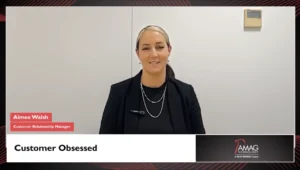Vibrations: Vibration Building Design for Cancer Center Part 3
On this third and final episode of Vibrations’ look at vibration building design, host Daniel J Litwin concluded his discussion with Ahmad Bayat, P.E., President at Vibro-Acoustic Consultants (VACC), and Mike Georgalis, North American Sales Manager at the Technical Manufacturing Corporation (TMC.) This final portion of dialogue between Litwin, Bayat, and Georgalis brings together insights on vibration building challenges and how partners like TMC and VACC work in harmony to collaborate on total solutions for their clients.
Georgalis said TMC works with on-site vibration data and creates solutions to lower those vibration levels to meet the customer’s specs and instruments. These instruments can’t operate with vibration levels above a certain threshold, so TMC needs to overcome any challenges to meet those goals. “We have a transfer function and a non-performance level,” Georgalis said. “We have the ability to increase that performance, decrease that performance as needed, but in a lot ofcases, our standard performance is enough to get those input levels to the output levels that are needed.”
Any vibration cancellation plan for a building must consider an instrument’s internal vibration isolation system. “If you are going to go with any vibration cancellation system, especially an active system, it’s absolutely critical that system is compatible with the isolators that are inside what’s built to support,” Georgalis said. “A lot of these types of instruments, the transmission electron microscopes, the Cryo TEMs, the NMRs, any kind of semiconductor type of manufacturing tools, a lot of different types of microscopes, they all have their own internal isolation systems, and the vast majority of these types of systems if you’re going to put them on an active cancellation system it’s absolutely critical that that active cancellation system is complementary.”








